Whether you are thinking of adding new plants to your indoor jungle or gifting a plant lover friend, there is something about adding eye-catching and unique plants to a home. Instead of adding or gifting commonly found plants like the snake plant and pothos, go for some of the rarest plants and unique plants of the plant kingdom.
If you don't have the greenest thumb, you may think of a rare and unique plant as a sensitive plant. While some will require a high humidity level and have temperature requirements, others can just be as easy to care for as any other plants.
If you do give these fascinating and incredible plants a try, you won't regret the decision! Turn your home into a one-of-a-kind botanical oasis with the twenty unique plants below. Thanks to their unique leaves, flowers, and palm fronds, they're unlike anything else in your plant collection.
20 Unusual Plants To Add To Your Plant Collection
01
Out Of 20
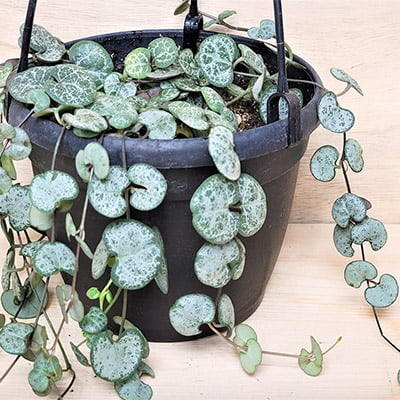
This South African String of Hearts plant (Ceropegia woodii), sometimes called a Rosary Vine or Sweetheart Vine, makes a stunning addition to any home. The trailing, succulent-like plant earns its name from its heart-shaped leaves. Some varieties boast gorgeous variegation. Its thin vines can reach up to twelve feet long, making it an excellent choice for hanging planters and high shelves. With proper care, it'll produce gorgeous magenta-colored flowers each year. But like other succulents, the String of Hearts is prone to overwatering and root rot.
Light— Bright, indirect sunlight, not suitable for low-light environments
Water— Infrequently, when the top 2/3 of the soil has fully dried out
Soil— Prefers well-draining cacti and succulent potting mixes
Climate— Ambient temperatures between 60 and 80 degrees F with moderate humidity
02
Out Of 20
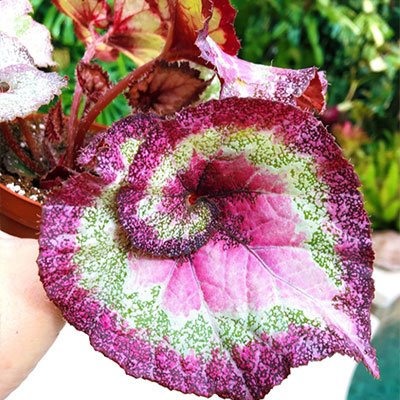
The eye-catching Escargot Begonia (Rex cultorum begonia) is a great way to add shape and texture to your containers or garden beds. The European hybrid earned its name from its snail-shaped foliage. Its spiraling leaves are marked by a unique texture and thick silver and green bands. The evergreen perennial can be planted outdoors in warmer climates but should be brought inside anywhere with cold winter weather.
Light— Partial sun
Water— To avoid soggy soil that leads to disease, only water when the soil feels dry to the touch
Soil— Well-draining soil with plenty of organic matter
Climate— Moderate humidity, not frost tolerant
03
Out Of 20
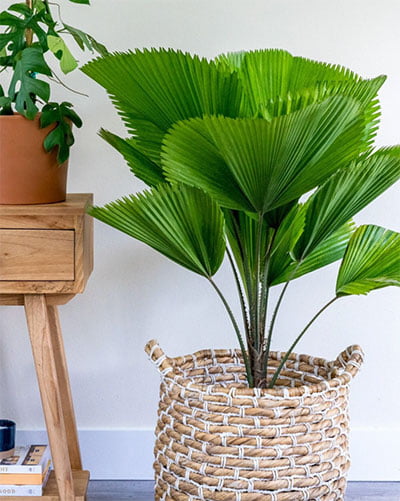
The Ruffled Fan Palm (Licuala Grandis) is guaranteed to make a statement in any indoor space. Its large, pleated palm fronds look just like an open fan, hence the nickname. The unusual plant grows to be quite sizable, especially when planted outdoors. Potted, it can reach anywhere between 6 and 10 feet with glossy leaves up to 22 inches in diameter. Native to the humid rainforests of the Vanuatu Islands off the Eastern coast of Australia, it prefers warm, humid conditions and doesn't tolerate frost well.
Light— Partial to complete shade, does not tolerate full sun well
Water— Infrequent watering, especially during the off-season
Soil— Tolerates clay and loamy soil, but grows largest in sandy soil with plenty of organic matter
Climate— Enjoys slightly cooler temperatures with high humidity
04
Out Of 20
Chinese Evergreen
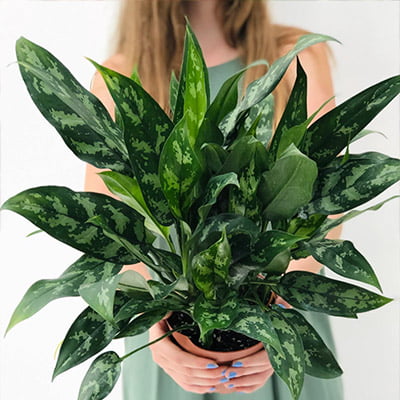
The Chinese Evergreen plant (Aglaonema) is one of few plants that can survive under fluorescent light, making it a great choice for office spaces. In low light conditions, you'll want to rotate it periodically to ensure even growth and adequate photosynthesis. Its lush green foliage boasts beautiful variation with various green colors and speckled patterns. The evergreen plant prefers stable temperatures between 70 and 85 degrees F, so keep away from heaters and windows with cold drafts.
Light— Indirect light, tolerates low light conditions well
Water— Prefers to dry out almost entirely between waterings, prone to overwatering and root rot
Soil— Well-draining, slightly acidic soil
Climate— Grows well in room temperatures and low to moderate humidity
05
Out Of 20
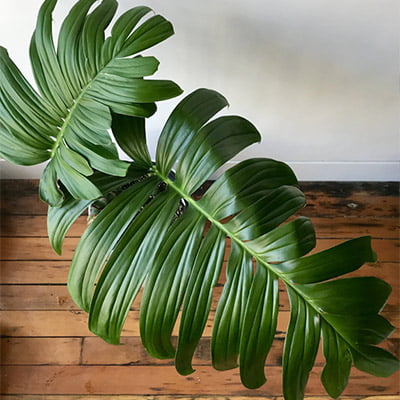
Go big or go home with a stunning Rhaphidophora decursiva plant. Its giant leaves look reminiscent of the lobed leaves of a Monstera plant or a delicate palm. In the wild, the unique plant tops out at 40 feet with leaves up to 40 inches long and 20 inches wide. But don't worry, as a houseplant, your R. decursiva will grow to be around 5 feet tall. When it comes to plant care, the tropical climbing plant is surprisingly low-maintenance.
Light— Bright, indirect sunlight from an east or south-facing window
Water— Infrequently, when the first 1 to 2 inches of soil have dried out
Soil— Well-draining soil with monthly fertilizer during the growing season
Climate— High humidity with stable temperatures between 60 and 80 degrees F
06
Out Of 20
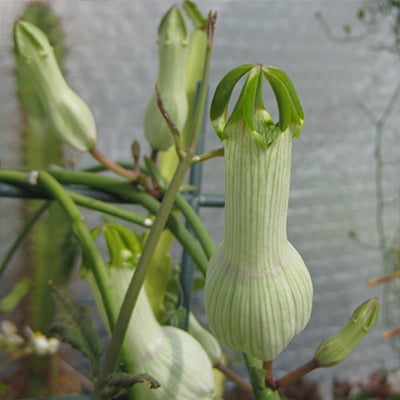
The Parachute Plant (Ceropegia Sandersonii), also known as an Umbrella Plant, Lantern Plant, or Fountain Flower, is one of the most unusual plants out there. The evergreen succulent boasts delicate stems, heart-shaped leaves, and parachute-like flowers on funnel-shaped tubes. Its long, trailing stems make it an excellent choice for high shelves, windowsills, and hanging baskets. This unique member of the Apocynaceae family originates from Southern Africa, where it enjoys high temperatures and ample sunlight.
Light— Full sun, avoid overexposure to direct sunlight in hot climates
Water— Light watering and occasional misting
Soil— Tolerates most potting soil but does prefer rich, porous mixes that drain well
Climate— Prefers cool, humid climates, not frost tolerant
07
Out Of 20
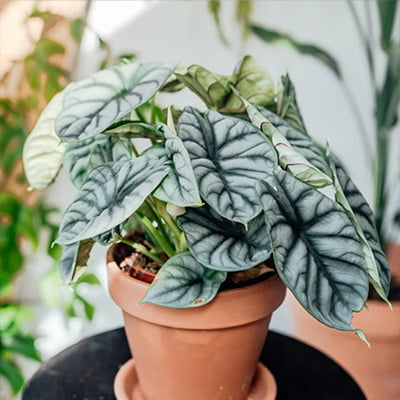
If you love unusual houseplants, add this rare Alocasia Dragon Scale plant (Alocasia baginda) to your collection. Its dark green leaves are tough and pliable, with a hardened topside and veiny texture that resembles dragon scales. Some varieties have a silver or purple tint to them. Though beautiful, the uniquely-textured leaves are poisonous to animals and humans, so be sure to keep them out of reach from pets and small children.
Light— Bright, indirect sunlight or dappled shade
Water— Keep soil moist, but allow to dry slightly between waterings
Soil— Light, airy soil with infrequent fertilizing
Climate— Warm temperatures and high humidity levels
08
Out Of 20
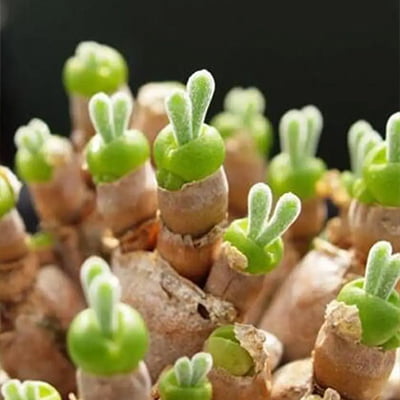
Looking to add an unusual succulent to your growing collection? This adorable Bunny Succulent (Monilaria moniliforme) is a small, sparse shrub with soft, cylindrical leaves that grow in pairs resembling bunny ears. Once it reaches maturity, it'll grow large pinkish-white flowers from time to time. Like most succulents, it's relatively low maintenance and can go long times between waterings.
Light— Direct or bright, indirect sunlight
Water— Once monthly, allow the soil to dry completely between waterings
Soil— Prefers well-draining cacti and succulent potting mixes
Climate— Prefers hot, dry environments and does not tolerate frost
09
Out Of 20
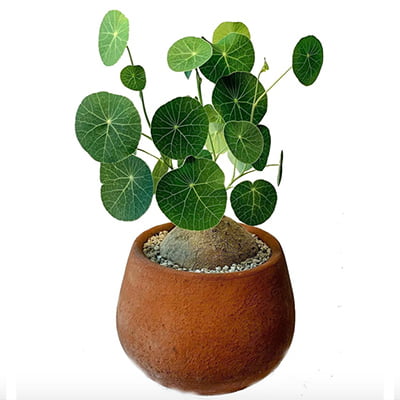
If you're ready to test your green thumb with a species that's slightly more care-intensive, try the stunning Stephania Erecta or Stephania Pierrei plant. The unique house plant sits atop a strange potato-looking bulb known as a caudex. Its long stems boast round, veiny leaves reminiscent of a Chinese Money Plant. Oftentimes, the plant is sold as a simple tuber that may require a bit of skill to help sprout.
Light— Does best in bright spaces, avoid direct sunlight during hot summer weather
Water— Light watering when soil is almost fully dried out
Soil— Light, sandy soil with adequate drainages, such as a cacti potting mix
Climate— Warm temperatures with low humidity
10
Out Of 20
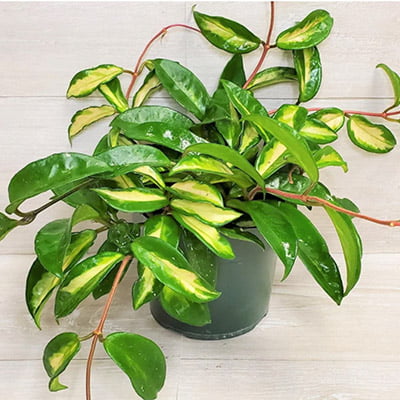
Swap out your simple ivy for the fascinating Honey Plant (Hoya carnosa). Its long, thin vines are covered in dark green leaves with a waxy shine and leathery texture. Some varieties are flecked with gorgeous variegation too. Under the right conditions, it'll produce small clusters of delicious-smelling flowers.
Light— Bright, dappled light, avoid too much direct sun
Water— Allow the top layer of soil to dry between waterings, water sparingly during the off-season
Soil— Rich potting soil
Climate— Extremely cold-sensitive, does tolerate temperatures below 40-50 degrees F
11
Out Of 20
Corpse flower
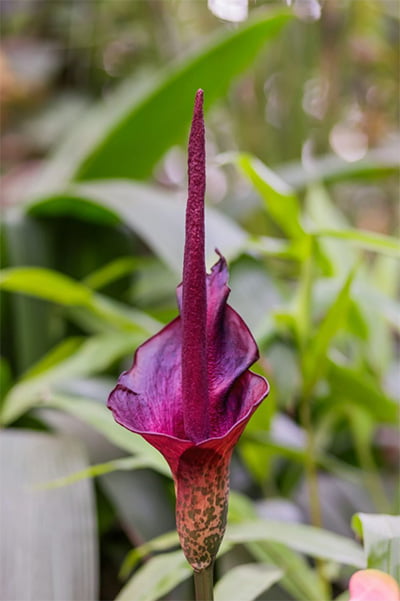
The corpse flower, also known as titan arum, is a flowering plant with the world's largest unbranched inflorescence. Like its name, this flowering plant has a rotting flesh and death scent when in bloom. But lucky for us, this stinky plant only blooms every seven to nine years and only lasts 24 to 36 hours. The foul smell is meant to attract pollinators like carrion-eating beetles and flies that normally feed on rotting meat.
Light: filtered sunlight or partial shade
Water: Allow the top layer of soil to dry between waterings
Soil: Regular potting soil that contains perlite or peat moss
Climate: warm growing condition above 75 degrees F.
12
Out Of 20
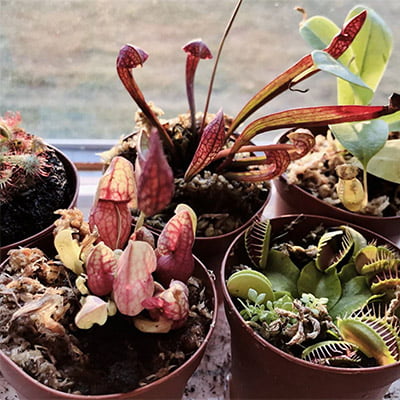
Carnivorous plants, known as insectivorous plants, can capture and digest insects through pitfalls and traps. In the United States, you can find venus flytrap, American pitcher plants, sundew, butterworts, monkey cups, bladderworts, tropical pitcher plants, etc. These fascinating plants can get nutrients from insects and other animals while also generating photosynthesis.
Light: Bright light, direct sunlight
Water: Rainwater, melted snow, or distilled water is ideal
Soil: Sphagnum moss, dried long-fiber sphagnum moss, or a mix of about three parts peat moss to one part clean, sharp sand
Climate: Almost all of them require high humidity, and temperature varies
13
Out Of 20
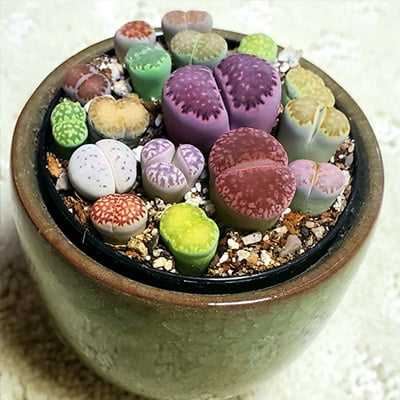
Pebble plants, also known as living stones, are little succulents that look like pebbles and rocks. Native to Africa, these little succulents grow extremely slow and only need little water. This genus has daisy-like flowers, and they will emerge in fall and winter. Easy to grow and low maintenance, this plant is perfect for beginners.
Light: Full sun
Water: Small amount of water every 10 to 14 days
Soil: Sandy, well-drained
Climate: can tolerate heat well and can survive temperature down to 50 degrees Fahrenheit
14
Out Of 20
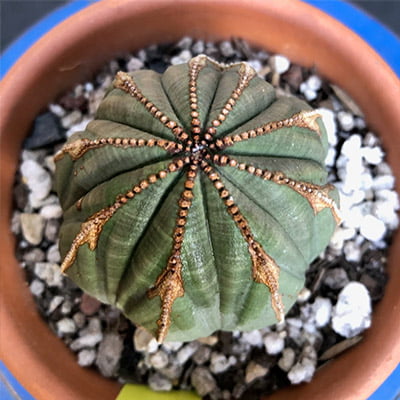
The baseball plant is a succulent perennial flowering plant that is native to South Africa. These slow-growing succulents are characterized by bulbous shape, V-shaped marketing, and seam-like ridges that resemble stitching that look like a baseball or sea urchin. In the wild, this plant
Light: Bright, direct light
Water: Once a month during the growing season and every few months during winter
Soil: Well-draining cactus/ succulent potting mix
Climate: Warm temperature but can tolerate occasional temperature down to 30 degrees Fahrenheit
15
Out Of 20
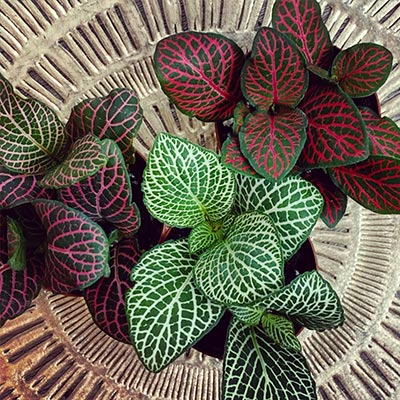
Nerve plants are also known as mosaic plants or painted net leaves. This easy to care for and unique-looking evergreen plant offers striking leaves of pink and green, white and green, or green and red. Nerve plants are a low-growing creeper that is perfect for terrariums.
Light: Bright indirect light to part shade
Water: Moderately. Allow soil to dry in between watering
Soil: Well-draining moist
Climate: Warm area and away from drafts. Will need high and constant humidity.
16
Out Of 20
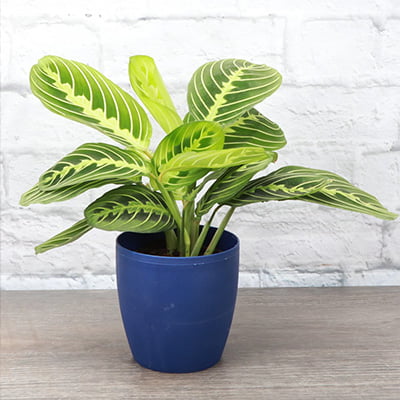
Pray plant is a unique tropical plant where the leaves stay flat during the day and then fold up like praying hands at night. The distinguishable tropical plants feature tricolor variety: deep free, velvet leaves with yellow splotches down the midrib and red veins traveling throughout the leaf. This plant does take some effort to grow over the long term and is not recommended for beginners.
Light: Partial shade, full shade
Water: Regular watering but allow the soil to dry partially
Soil: Well-draining moist
Climate: Warm, moist, gentle airflow, and plenty of fertilizer
17
Out Of 20
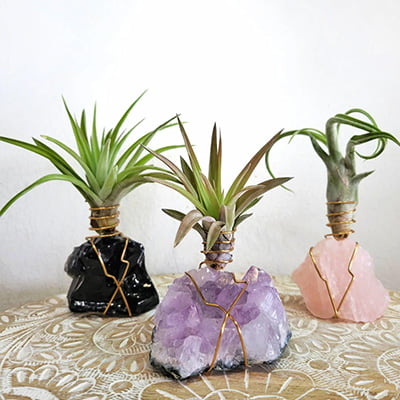
Air plants are fun and trendy plants that don't need soil to survive, but they do require a little attention to thrive. Like the plant name applied they grow and thrive just in the air. There are hundreds of species and varieties of air plants you can find on the market, and they are easy to care for once you know what they need.
Light: Bright lit spot
Water: Once per week
Soil: None
Climate: Warm temperature
18
Out Of 20
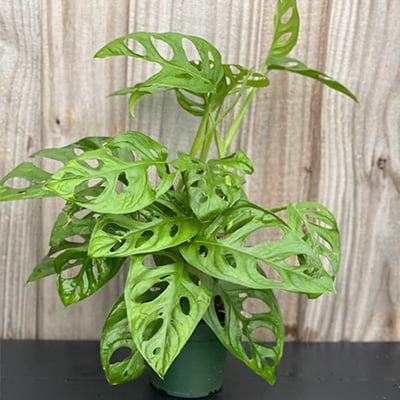
The Swiss cheese plant gets its common name from its large, heart-shaped leaves that develop holes as plants age and result in looking like Swiss cheese. Swiss cheese plant is native to Central and South America but can be grown in a container indoors when given its ideal condition. And if you have fur babies at home, keep in mind that Monstera plants are toxic to pets.
Light: Bright, indirect light
Water: Once per week
Soil: Moist and well-drained. Best in peat-based potting mix
Climate: Thrives in high humidity and warm temperatures
19
Out Of 20
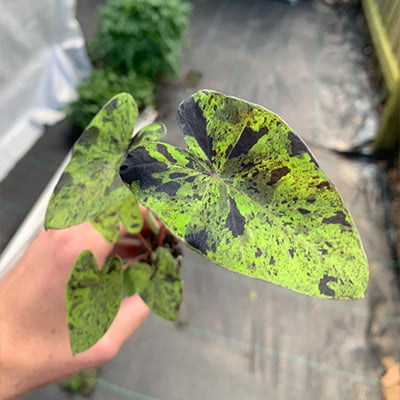
‘Mojito’ elephant’s ear is a stunning plant to add to your home as it features dark flecks, splotches, and streaks, along with purple stems. This plant is fast-growing, strong, and easy to care for, making it perfect for beginners.
Light: Full Sun or part shade
Water: frequent watering
Soil: Organically rich oil
Climate: Warm
20
Out Of 20
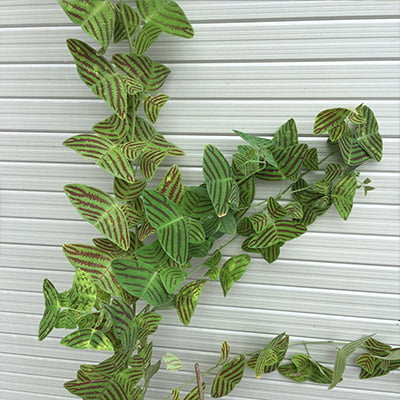
The butterfly wing plant is a rare tropical plant that resembles butterflies in flight. The unusual and eye-catching shape will guarantee to make a statement in your home. This wonderful plant is available in two different colors: green with red stripes and dark red.
Light: Part Shade
Water: At least twice weekly
Soil: Organic-rich and well drained soil
Climate: Warm
